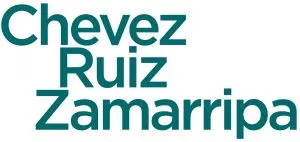Money laundering
1. What laws in your jurisdiction prohibit money laundering?
Mexico
The following laws prohibit money laundering in Mexico:
- the Mexican Constitution; and
- the Federal Criminal Code.
Additionally, certain states provide within their local Criminal Codes a specific prohibition and sanctions for money laundering.
Also, all financial institutions in Mexico have specific regulations for anti-money laundering compliance matters.
Section 22, paragraph four of the Mexican Constitution provides that assets forfeiture is applicable if the legitimate origin cannot be demonstrated and if such assets are related to investigations derived from, among others, money laundering.
Sections 400-bis and 400-bis 1 of the Federal Criminal Code establish the applicable penalties for carrying on determined activities such as the acquisition, alienation, administration, guarding, possession, exchange, conversion, deposit, withdrawal, giving or receiving, by any means, investing, transferring, transporting within the national territory, to international territory or vice versa, resources, rights or properties of any nature, when there is knowledge that they were obtained from an illicit activity (money laundering).
Other activities prohibited by the code are the concealment or intention to hide the nature, origin, location, destination, movement or ownership of resources, rights or property, when there is knowledge that they were obtained from an illicit activity (money laundering).
Along with the Federal Criminal Code, certain local Criminal Codes classify money laundering as a felony. For example, the Mexico City Criminal Code establishes, under section 250, the prohibition of the same activities foreseen in the Federal Criminal Code. The applicability of federal or local regulations must be determined on a case-by-case basis.
Nevertheless, the Federal Criminal Code is applicable to the national territory, so if there is a local code that does not foresee money laundering, the Federal Criminal Code must be applied.
Regarding financial institutions in Mexico, the anti-money laundering provisions are applicable to general bond warehouses, investment advisers, brokerage houses, exchange houses, exchange centres, investment funds, credit institutions (ie, banks), savings and loan cooperatives institutions, multiple-purpose financial institutions (regulated and non-regulated), People's Finance Corporation (SOFIPO), Community Finance Corporation (SOFINCO), Rural Integration Finance Corporation, money transmitters, credit unions and the National Agricultural, Rural, Forestry and Fishing Development Financial Institution.
2. What must the government prove to establish a criminal violation of the money laundering laws?
Mexico
The Mexican government must prove that one of the assumptions foreseen in section 400-bis of the Federal Criminal Code has been committed:
- the acquisition, alienation, administration, guarding, possession, exchange, conversion, deposit, withdrawal, giving or receiving by any means, investing, transfer, transport within the national territory to international territory, or vice versa, of resources, rights or properties of any nature, when there is knowledge that they were obtained from illicit activity; and
- hide the nature, origin, location, destination, movement or ownership of resources, rights or property, when there is knowledge that they were obtained from illicit activity.
Once the culpability has been proven, a penalty from five to 15 years of prison and a fine from 1,000 to 5,000 times the Unit of Measurement and Update (economic reference in Mexican pesos to determine obligations provided in federal and local laws), will be imposed.
In addition to the assumptions foreseen in the Federal Criminal Code, the Prevention, and Identification of Transactions with Illegal Funds Federal Law (Anti-Money Laundering Law) establishes the following sanctions:
Prison time from two to eight years and a fine from 500 to 2,000 times the Unit of Measurement and Update will be imposed on anyone:
- who intentionally provides fake information, documentation, data or images to the person obliged to file the notices regarding vulnerable activities; and
- who intentionally modifies information, documentation, data or images destined to be incorporated in the aforementioned notices.
Prison time from four to 10 years and a fine from 500 to 2,000 times the Unit of Measurement and Update will be imposed on:
- the federal public officer who unduly manages the information, documentation, data or images to which they have access because of their public charge; and
- anyone who, without authorisation from the competent authorities, divulges by any means the information in which a natural person, legal entity or public server is linked with notices or requirements of information between authorities, related to any vulnerable activity, regardless of whether the notice exists or not.
To view the full article please click here.
Originally published in Global Investigations Review
The content of this article is intended to provide a general guide to the subject matter. Specialist advice should be sought about your specific circumstances.


